Elegoo Neptune 4 Plus review: 3D printing for fun and rockets
I’ve all the time been fascinated by 3D printers however I’ve by no means identified what I might do with one. When Shenzhen-based agency Elegoo provided to ship their $350/£300 Neptune 4 Plus for evaluation, I figured I would higher take them up on their supply and discover out simply what’s attainable with a contemporary 3D printer – and what challenges awaited me as a whole newbie. This is what I’ve found – from the gauntlet of the preliminary setup course of to the successes and failures which have outlined the primary few weeks of 3D printing.
First, the setup course of. The Neptune 4 Plus is available in items, so you might want to comply with an IKEA-style meeting course of to affix the foremost elements, mount the included management pod and join a bunch of wires. There is a printed handbook supplied, however there’s additionally a digital model on a USB stick. That stick additionally incorporates a video tutorial for the setup course of, which I adopted fastidiously. The construct itself is sort of easy and should take round an hour, with no actual challenges – every step’s smaller elements like screws are neatly labelled in separate luggage and all the instruments are supplied which is sweet.
The actual problem comes once you’ve screwed every little thing collectively, plugged every little thing in and turned the machine on for the primary time – as now it is time for levelling. This course of requires you to lift or decrease the nozzle, hundredths of a millimetre at a time, till a chunk of paper between the nozzle and the print mattress may be pulled out however not pushed again in. This course of is repeated on six factors across the mattress, with the adjustment coming this time from springs beneath which you can tighten or loosen by rotating a dial. Once more, you are on the lookout for a good quantity of friction between nozzle, paper and mattress; judging how a lot friction takes some persistence.
After ending the six factors, I had seen a YouTube video that advisable not going forward to the following step – auto levelling – however as an alternative to return to the preliminary levelling step, levelling the centre level as soon as once more, doing the six springs once more after which lastly transferring onto the auto-levelling process. I did this – solely tearing my piece of paper a couple of times – and was rewarded with the auto levelling stage, which sees the print head transfer to 36 totally different factors on the mattress in sequence.
From right here, it is a easy matter of including a spool of PLA to the holder on the prime of the machine, feeding it by means of the ‘out of PLA’ sensor, pushing it into the highest of the print head so far as attainable after which lastly urgent the ‘load’ button to warmth up the pinnacle and begin pulling the PLA by means of it. I did not fairly know what to do with the PLA that flowed by means of, however I used the plastic scraper device to poke it away from the print mattress and that appeared to work OK.
The USB drive comes pre-loaded with just a few designs, so I opted to print a small mannequin Buddha because it appeared the quickest to make. It estimated a construct time of round 20 minutes, however after round 12 the Buddha was full – and appeared in good working order, with extraordinarily faint horizontal strains seen however in any other case extra element than I used to be anticipating on a determine standing solely a few inches excessive.
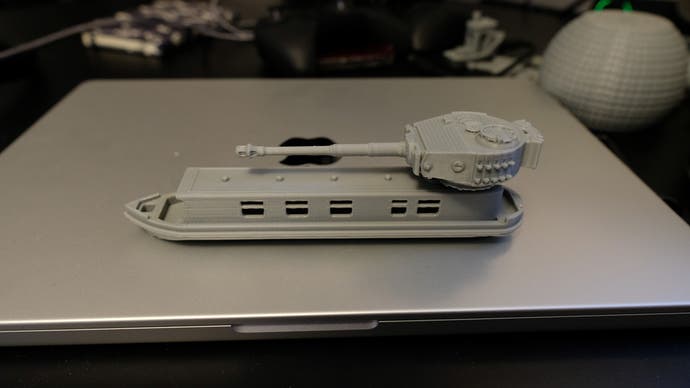
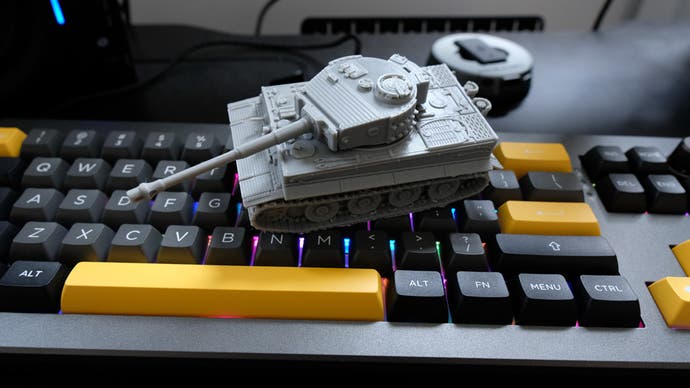
My greatest mistake on that first night time was beginning up a second print straight away: this time a plant pot! I used to be excited to supply one thing really helpful and show the idea out, however the print took round three hours – and it was already previous midnight. I did not need to fall asleep and even depart the room for very lengthy, lest the construct be ejected at excessive velocity or the printing to in any other case go haywire, so I babysit it for these three hours whereas doing work on the opposite facet of the room. PLA fumes aren’t extremely poisonous, I do not suppose, however I opened just a few home windows anyway simply to make certain.
Moreover my rising weariness, the difficulty with this late-night print was that the Elegoo made a heck of a load of noise with its assortment of tiny (80mm?) followers at full pelt, with the shaking of the desk and the squeak of the print head because it raced round in circles. I ended up transferring mainly every little thing off the desk to cease stuff banging rhythmically into the wall and altered the machine to ‘silent’ mode – amusingly, ‘regular’ and ‘sport’ are the opposite two velocity settings – and this made me really feel rather less responsible for probably maintaining my neighbours awake late into the night time with a suspicious racket.
After this preliminary trial, I felt more and more comfy with the machine and began churning out prints from my machine over WiFi to the printer underneath the motto ABP – all the time be printin’. Over the following few days, I downloaded a ton of fashions from Thingiverse and made:
- Colt 1911 pistol (the very best factor I’ve ever printed – unbelievable element)
- Weighted Companion Dice keycap (printed in six minutes!)
- Snowflake Christmas decoration (extraordinarily speedy, if a bit gray)
- Two nutcrackers (genuinely helpful and funky to see an ideal working screw)
- One other Buddha (for testing functions)
- USP-S w/ detachable supressor (the largest factor I’ve ever printed however fiddly)
- Narrowboat (printed an enormous pile of string earlier than I found one thing referred to as “helps” that have to be beneath “overhangs” so the 3D printer is not printing into “empty air”)
- Panzerkampfwagen VI Tiger 1 Ausf. E tank with rotating turret (that required an enormous quantity of effort to take away helps printed within the tiny hole between the treads and the chassis)
- Traditional rocket (so I may use this text title)
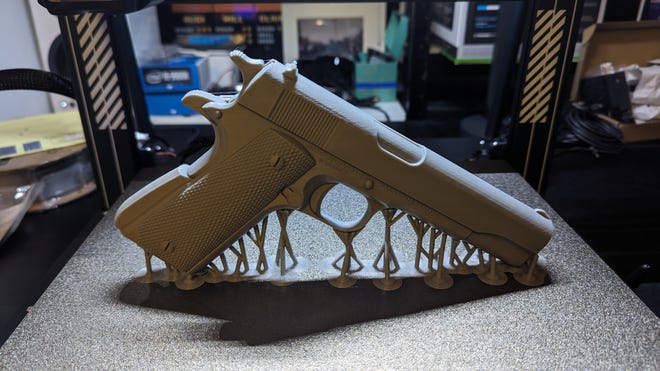
I used to be fairly proud of the element – seeing advantageous lettering on the facet of the 1911 was significantly jaw-dropping – and the velocity at which every little thing was produced, with the longest print (the USP-S) taking round eight hours, with smaller fashions just like the snowflake, nutcrackers, Budda and rocket being achieved in round half an hour.
After doing fairly just a few prints, I attempted utilizing a slicer program I would seen advisable on-line, OrcaSlicer, moderately than the supplied possibility of Elegoo Cura 4.8. Although a profile for the Neptune 4 Professional existed, which I figured could be shut sufficient, it will definitely failed. The following print I attempted slammed into the nozzle into the print mattress, and after this setback, a variety of stuff I attempted failed, even printing pre-sliced pattern fashions supplied with the printer, and I used to be satisfied that I massively messed issues up – I would busted the nozzle, or borked the firmware by some means.
Fortunately, my points had been resolved with repeated handbook and computerized relevelling and I bought again to work. Slowly, I discovered some essential supporting expertise: easy methods to add helps utilizing Cura, which certainly would have prevented some earlier disasters, including totally different sorts of helps, after which eradicating these helps from each exterior (straightforward) and inner (actually powerful) placements. Not each print survived unscathed, however nothing was completely ruined both. I used to be making genuinely cool stuff, no less than in the event you did not look too intently on the advantageous element.
Round per week on, it appears like an excellent time to put in writing up this evaluation and share my experiences. That is in all probability unsurprising, however the principle factor right here I’ve discovered is how little I really find out about 3D printing and the way complicated the observe is! This is likely one of the finest and worst components about choosing up a brand new passion – one thing that appears initially easy and easy is revealed to have stunning, terrifying complexity that may simply put you off completely in the event you’re not cautious.
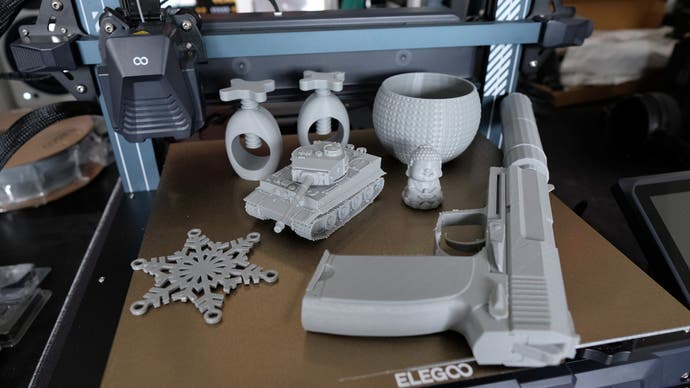
Do not get me unsuitable, studying Reddit threads and watching YouTube movies gives a variety of helpful info, however it may be virtually overwhelming to see what number of variables there are to tweak and the way a lot you should be maintaining in thoughts: slicing your fashions, updating your firmware, selecting your slicer software program, changing nozzles, performing upkeep, utilizing totally different supplies and so forth and so forth.
In the end although, I am not going to fret about that facet of issues an excessive amount of – I am going to search assist if issues go horribly unsuitable, however for now I am having fun with the power to think about one thing, go “ah that may be cool to print”, after which have slightly plastic mannequin of it just a few hours later. If it is not completely printed or it goes a bit unsuitable, that is advantageous – I am going to determine issues out ultimately and I am not going to emphasize about issues an excessive amount of within the meantime.
The massive query I had coming into this was “is it really helpful to have a 3D printer?” I believe it is helpful, however that utility comes at a value – bodily house on a desk – about half of an Ikea Idasen 160x80cm desk is completely subsume; time spent printing, post-processing, planning and sustaining; the necessity to maintain home windows open in winter to stop the build-up of PLA fumes; and naturally the funding into the printer itself.
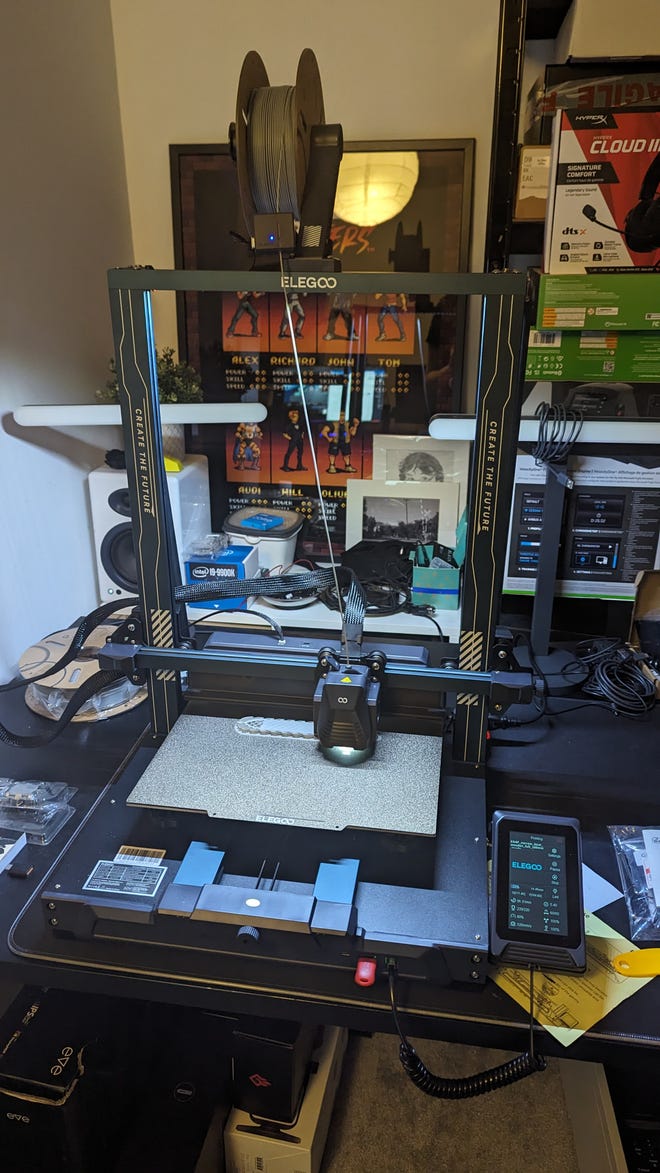
For that although, you may make a virtually limitless number of small and medium-size knick-knacks for a comparatively modest value in PLA and energy meaning you are sorted for items for no less than just a few years (till your pals get bored with 3D-printed stuff!). You can also make helpful stuff too, just like the plant pots and nutcrackers I made, however the problem is extra about fascinated about what you may really do with – and gaining the abilities to design bespoke components your self – than it’s about mastering print settings. I determine that you will make your a refund after a comparatively minor variety of prints, and the longer the printer works, the higher worth it turns into.
And by way of worth, the Neptune 4 Plus does seem to be an excellent one. It is fairly large in comparison with different 3D printers I’ve seen, but comparatively reasonably priced. The firmware and software program stay immature, I believe it is honest to say, with Elegoo’s supplied Cura software program being on model quantity 4.8 whereas the principle Cura construct is on the (reportedly much-improved) model 5.5… however out of the field, every little thing does work. It is actually not plug and play, however the construct course of is simple and comparatively temporary, and having some fashions supplied on the printer itself gave me the arrogance to attempt bigger and extra complicated prints earlier on. I just like the WiFi performance, I just like the built-in LEDs for the mattress and the nozzle, I like the power to do handbook mattress levelling.
So, in the long run, I actually fairly like this 3D printer and at $350/£300 it actually represents good worth for cash given its measurement. It simply must mature in order that I can use it with totally different software program packages and improve the firmware with out worry. (Going onto the devoted subreddit and seeing experiences of individuals bricking their gadgets attributable to a firmware replace isn’t a fantastic look, that is for certain.) For now although, in the event you follow the default firmware and the default software program bundle, it appears surprisingly bulletproof for newcomers – simply bear in mind to degree the mattress just a few occasions and wipe down the printing space with rubbing alcohol each few prints, and you need to be good to go!
I am going to proceed to experiment with the Neptune 4 Plus behind the scenes, so let me know if there’s one thing you need to know – or one thing you need me to attempt to print!